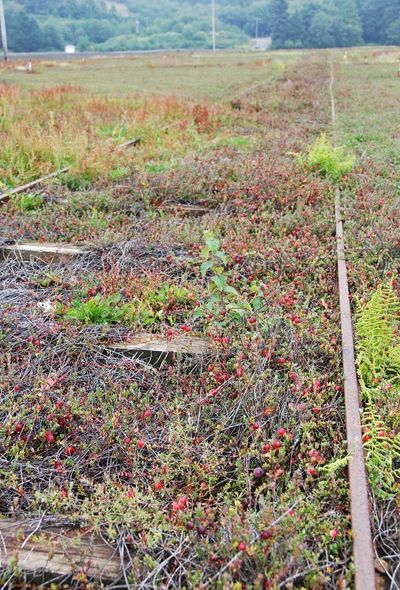Cranberry Winter Requirements
During a cranberry plant’s winter dormancy, the fruiting buds become mature. This makes winter and spring freezes potentially damaging, as they can kill the terminal growth and tender buds. Flooding as a part of cranberry winter care can help protect the roots and fruit buds. There are several other winter processes that occur to help increase cranberry winter hardiness and spring growth. Cranberries are evergreen, perennial plants native to North America. In the regions of major production, frost is a common occurrence during the plant’s dormant period and well into spring. Freezing can cause cellular changes in plants and damage them permanently. Creating strategies to protect plants from icy weather will prevent plant loss as well as preserve the future harvest. The plants are produced in depressed beds of peat and sand surrounded by earthen dikes. These allow the beds to be temporarily flooded for fall frost protection and winter flooding to occur naturally. In areas with freezing winter temperatures, the winter floods freeze and form a shielding layer with relatively warmer waters just under the ice layer. This form of cranberry winter care prevents major freeze injury and preserves the plants until spring thaws.
What Happens to Cranberries in Winter?
Cranberry plants go dormant in winter. That means their growth significantly slows and the plant is almost in a hibernation stage. Cell formation is slowed and new shoots and plant material is not actively in process. However, the plant is getting ready to produce new growth as soon as temperatures warm. Winter floods, whether natural or manmade, generally occur in early winter and are a standard part of regular cranberry winter care. All parts of the plant are covered by water, including any vine tips. This deep water covering creates a cocoon of sorts that protects roots as well as plant stems. In very cold regions, the unfrozen water under the ice layer is removed to increase light penetration and reduce oxygen deprivation, which can cause leaf loss and reduce crop yield. Just as with any plant, cranberry winter requirements must include some solar exposure so plants can photosynthesize.
Other Forms of Cranberry Winter Protection
Every three years or so, a process called sanding occurs. This is when sand is applied to the ice layer during winter. It is allowed to melt in with the ice in spring, coating roots and giving new shoots a layer in which to root. Because herbicides and pesticides cannot be added to the flood water in winter, sanding also reduces insect populations and prevents a variety of weeds. It also buries many fungal organisms and stimulates shoot production, increasing productivity of the bog. As daylight hours increase, a change in hormonal levels occurs, stimulating new growth, and cold tolerance in plants reduces. This lessened tolerance can result in cold injury in spring if winter floods are removed too quickly. The whole process is a careful dance of monitoring weather forecasts and making decisions that will affect the success or failure of the crop.
